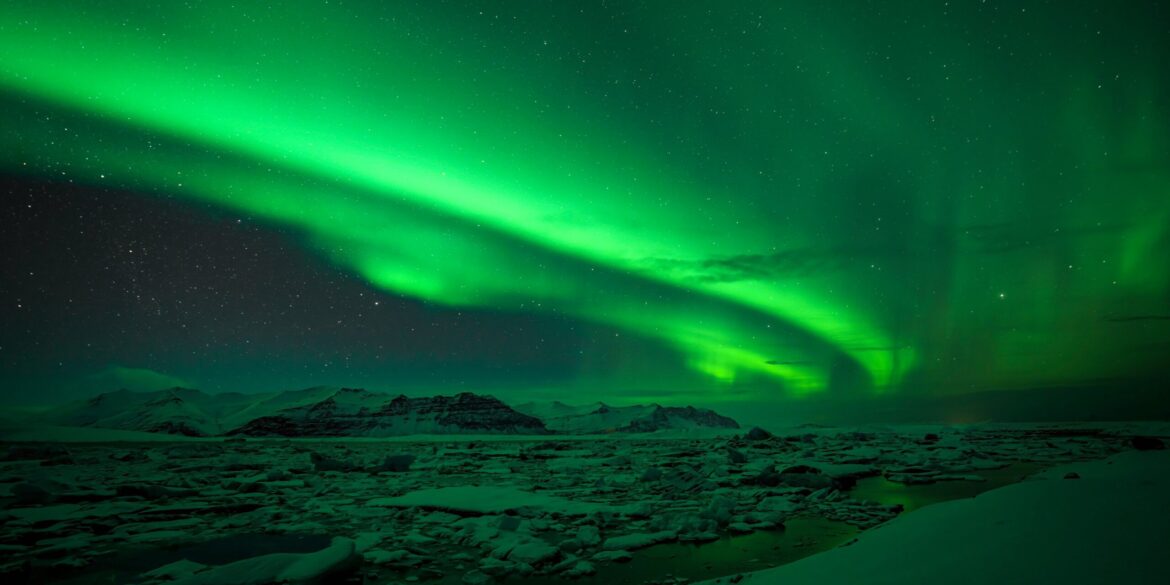On the evening of May 27, 2025, skywatchers across parts of the northern United States were treated to a spectacular display of the northern lights, or aurora borealis, as vibrant streaks of color danced across the night sky. Visible in regions including Washington, Idaho, Montana, North Dakota, Minnesota, Wisconsin, and Michigan, the auroral display was one of the most vivid seen in recent years, with the event receiving a high rating of five on the Kp index. This index, which ranges from 0 to 9, measures the intensity of geomagnetic activity and serves as a key indicator of the northern lights’ strength.
This remarkable celestial event was caused by solar particles colliding with Earth’s magnetic field, sparking geomagnetic storms that send waves of charged particles into the atmosphere. As these particles interact with the gases in Earth’s atmosphere, they produce the dazzling light shows for which the aurora borealis is famous. For those fortunate enough to witness the phenomenon, the colors ranged from deep greens and blues to brilliant reds and purples, painting the night sky with a natural beauty that captured the attention of both seasoned skywatchers and casual observers.
Solar Activity and the Kp Index
The northern lights occur most frequently in high-latitude regions, but during times of intense solar activity, such as geomagnetic storms, they can extend much further south, making them visible to a wider audience. The Kp index is a critical tool used by scientists to predict aurora activity, with a higher number indicating more intense geomagnetic storms. The display on May 27 earned a score of five, considered moderate to strong on the scale, meaning that the geomagnetic activity was enough to produce vivid auroras visible across a broad section of the northern U.S.
The solar activity responsible for this event was linked to a series of solar flares and coronal mass ejections (CMEs), which sent waves of charged solar particles toward Earth. These energetic bursts of solar wind interact with Earth’s magnetosphere, distorting it and causing the auroras to appear. For those located in the affected regions, the experience was a rare and mesmerizing opportunity to witness the power of nature on full display.
Optimal Viewing Conditions and Public Fascination
For many observers, the best way to view the aurora borealis is to find dark, rural locations away from city lights, where light pollution would obscure the natural spectacle. Skywatchers were advised to head to areas with minimal artificial lighting for the clearest view. While urban areas can often dampen the intensity of the lights, rural locations in the affected states saw some of the most breathtaking auroral displays.
The event quickly garnered widespread attention, further amplified by a viral video shared by NASA astronaut Nichole Ayers. Captured from space, the video offered a rare and stunning perspective of the northern lights, reaching a global audience and sparking public interest in the event. Ayers, who was aboard the International Space Station at the time, shared her awe at witnessing the auroras from orbit, adding a unique layer to the public’s fascination with the phenomenon.
Scientific Significance and Global Reach
The northern lights have long captured human imagination, often associated with mystery, folklore, and scientific curiosity. Beyond their beauty, auroras offer valuable insights into the Earth’s magnetic field and its interactions with solar wind. The study of geomagnetic storms and auroral displays helps scientists better understand space weather, which can have significant impacts on satellite communications, GPS systems, and even power grids on Earth.
While the northern lights are most commonly associated with the polar regions, their appearance farther south, as seen on May 27, reflects the ongoing solar cycle, which operates in approximately 11-year intervals. During solar maximum, which is the period of peak solar activity, auroras become more frequent and more intense. The 2025 aurora borealis event is part of a broader trend of heightened solar activity as the Sun moves toward the peak of its current cycle.
Looking Ahead: More Opportunities to See the Aurora Borealis
For many skywatchers, the May 27 event was a highlight of the year, but opportunities to witness the aurora borealis may continue in the months ahead. Solar activity tends to fluctuate, and experts predict that geomagnetic storms and subsequent auroras will be visible throughout the year, especially as the Sun reaches its solar maximum in 2025 and 2026. Skywatchers are encouraged to keep an eye on solar forecasts and the Kp index to track potential aurora sightings in the coming months.
For those interested in experiencing the aurora borealis, it is always a good idea to keep up with space weather updates from sources like NASA and the National Oceanic and Atmospheric Administration (NOAA). These organizations provide valuable information on solar activity and the best times and places to see the aurora in all its glory.
As the northern lights continue to captivate audiences around the world, the May 27 event serves as a reminder of the natural beauty and wonder that exists in the skies above.

